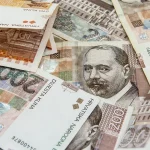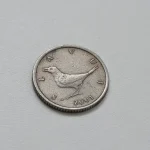As Poslovni Dnevnik writes, fruit and vegetable prices on Croatian markets across the country are skyrocketing. The fact these are astronomically high prices compared to the same period last year has been confirmed by the fact that a kilogram of chard or spinach is now costing 30 to 50 kuna, as reported by Slobodna Dalmacija.
Right behind chard come both coloured and white beans that are sold at a price of 30 to 40 kuna and the absolute record holders for this are the markets in Split, Dubrovnik and Rijeka. Parsley is a bit cheaper down in Dubrovnik where it sells for 30 kuna, in Split it stands at 40 kuna and in Rijeka, on some markets it’s costing as much as 50 kuna.
Among the most expensive foods is garlic, which sells for as much as 60 kuna per kilogram at the moment. Those with more luck can find it for a few kuna cheaper, but never under 50.
Even something as basic as lettuce seems to have become a luxury of sorts thanks to soaring Croatian inflation. It is being sold at the price of 25 kuna down in Dubrovnik, Split and up in Pula, while you’ll pay 15 kuna in Osijek. Carrots are slightly cheaper, ranging from 10 kuna (Pula and Karlovac) to 25 kuna (Dubrovnik). Beans are 50 kuna when sold at markets. Potatoes are 8 kuna in Dubrovnik, 10 in Split, 12 in Osijek. Peas in Pula are around 35 kuna.
Green cabbage and kale range from 15 to 20 kuna, red onion in Split is 25 kuna, 20 kuna down in Dubrovnik, and the cheapest can be found in Karlovac and Koprivnica, where 10 kuna should be set aside for one kilogram. Young onions are more expensive and range from 25 to 35 kuna, which is very high for the average Croatian earner.
Fruit prices have also risen compared to last month thanks to ongoing Croatian inflation. Apples are the most expensive in Dubrovnik, Pula, Split (12 kuna) while the cheapest in Koprivnica and Sisak cost a mere 5 kuna. Oranges range from 10 to 15 kuna, lemons range from 15 kuna (Osijek) to 20 kuna (Dubrovnik). The Dubrovnik market is a record holder when it comes to the price of strawberries, where you’ll need to set aside 50 kuna per kilogram, followed by Split where they cost 40 kuna and Osijek where they cost 30 kuna.
Due to the rise in prices of energy and raw materials, fertilizers, seeds and protective equipment, the rise in prices of fruits and vegetables is a logical sequence of the crisis in the market of agricultural products. Strawberries, garlic, chard, lettuce have thus become a luxury for many Croatian wage earners who, even before the price increases caused by inflation, could barely make ends meet. As a result most people now bypass the markets and buy their products in shopping centres where the shares on certain agricultural products are either lower quality imports or vegetables which are being sold just before their expiration date.
All this points to tectonic disturbances in the agricultural market caused, among other things, by the war in Ukraine, which can be overcome only by joint actions of producers and the state, especially in terms of a fairer distribution of incentives from EU funds with which Croatian farmers are dissatisfied.
For more, check out our lifestyle section.












